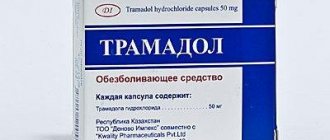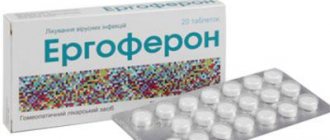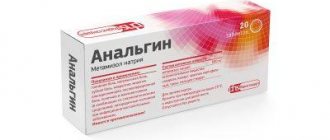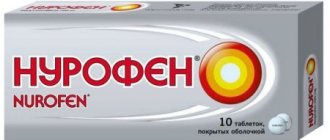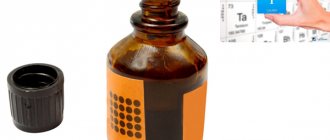If a drug such as Flemoxin Solutab is used for treatment, an overdose occurs only in case of uncontrolled use or violation of the treatment regimen. This drug is used to treat infectious processes that are provoked by pathogens susceptible to amoxicillin . Often, general indications for the use of this antibacterial drug are diseases of the urinary system, reproductive system, respiratory system, and digestive system. The medication is also used to treat pathological processes on the surface of the skin.
Characteristics of the drug
The composition of the drug "Flemoxin Solutab" includes the active substance - amoxicillin, which is an antibacterial element active against pathogens of many diseases, primarily those of infectious origin. After use, it is quickly absorbed into the gastrointestinal tract .
After two to three hours, the concentration of the active substance of the drug reaches its maximum value in the blood. When Flemoxin is administered orally, its active substances are absorbed into the blood plasma. The accumulation of active elements during the course of therapy occurs in bone tissue, in the inner layers of mucous membranes, in intraocular fluids, and in mucus. This medicine belongs to the category of penicillin antibiotics. The product has minimal side effects and contraindications. Flexmoxin very rarely upsets the balance of microflora in the intestinal tract, so dysbiosis does not develop. The effect of the drug differs in duration, so it can be taken only once a day. The medicine can enhance the effects of other medications.
Properties
Amoxicillin belongs to the penicillin class. They are organic compounds based on 6-aminopenicillanic acid, which is obtained from cultures of the mold Penicillium chrysogenum
.
| 6-aminopenicillanic acid | ||
| Benzylpenicillin | Ampicillin | Amoxicillin |
As you can see, amoxicillin differs from ampicillin in the presence of a hydroxyl group. This molecular change increases the rate of absorption of the drug, resulting in less destruction of the β-lactam ring and the creation of high concentrations in the blood in less time. This allows amoxicillin tablets to be prescribed instead of injectable ampicillin, providing cost benefits and ease of administration.
In turn, ampicillin and amoxicillin differ from benzylpenicillin by the presence of an amino group, and therefore they are often classified as aminopenicillins. Both drugs differ from benzylpenicillin in their resistance to gastric juice, and, accordingly, in the presence of oral dosage forms, as well as a wider spectrum of action. The spectrum of activity of aminopenicillins has been expanded due to the effect on some representatives of the Enterobacteriaceae family: Escherichia coli, Shigella, Salmonella and Proteus mirabilis
, which are characterized by a low level of production of chromosomal β-lactamases. At the same time, ampicillin is slightly superior to amoxicillin in activity against Shigella.[1]
When is it appointed?
Flemoxin is able to actively influence pathogenic microorganisms, which are the causative agents of many infectious processes . Treatment with Flemoxin is advisable in the presence of the following diseases and conditions:
- diseases of the respiratory system;
- inflammatory and infectious processes in the hearing organs;
- infectious processes in the organs of the urinary system;
- inflammatory diseases in the gallbladder and its canals;
- some sexually transmitted diseases (for example, gonorrhea);
- inflammatory and infectious processes on the skin;
- certain specific ailments (leptospirosis, listeriosis);
- infectious processes in the intestinal tract.
Medicines and dosage should be prescribed by a specialist.
Poisoning prevention measures
Flemoxin is a fairly harmless, but at the same time effective drug. Its use is allowed even during pregnancy (with an assessment of possible harm and benefits). To avoid poisoning, the following preventive measures must be taken:
- At the beginning of treatment, weigh yourself and tell the doctor your exact weight. Knowing it, the doctor will calculate the required daily dose and prescribe the correct regimen for taking the medication.
- Also inform the specialist about the presence of chronic diseases and pathologies of your body.
- Do not self-medicate with antibiotics. It can do much more harm than good. A person without special education will not be able to correctly determine the required dosage.
- Store medications in places that are difficult for children to reach, since modern medications are often available in bright packaging that is attractive to children.
Flemoxin Solutab, like any antibiotic, destroys not only harmful microorganisms and bacteria, but also some useful ones. To restore the microflora, in parallel with taking the medicine, it is necessary to use drugs containing bifidobacteria and lactobacilli.
When not prescribed and side effects of the drug
Sometimes when using the drug, some patients may suffer allergic reactions to the active components. Typically, such reactions manifest themselves in the form of itching on the skin, hyperemia of the mucous membranes, and a rash on the epidermis. If there is a tendency to allergic reactions, the drug is prescribed with caution.
Sometimes Flemoxin Solutab can provoke the development of diarrhea; with prolonged use, colitis may develop . The medicine is prescribed with caution for infectious mononucleosis and lymphocytic leukemia.
In general, the drug is well tolerated in the treatment of many inflammatory and infectious processes. Sometimes side effects may occur that do not require specific treatment. After stopping the drug they go away on their own. Possible side effects include:
- the appearance of nausea or vomiting, upset stool, discomfort in the anus, inflammation in the large and small intestines;
- sleep disturbance, irritability, frequent headaches;
- rapid pulse, arrhythmia, difficulty breathing;
- Painful sensations in the joint apparatus and stiffness of movement may appear (mainly in the morning);
- the body can also , rashes on the skin, dermatitis;
- There is a deviation from the norm in blood fluid levels - the hemoglobin level decreases, eosinophils may decrease or increase in concentration.
Interactions
Antacids, glucosamine, laxatives, food, aminoglycosides - slow down and reduce absorption; ascorbic acid increases absorption.
Bactericidal antibiotics (including aminoglycosides, cephalosporins, cycloserine, vancomycin, rifampicin) - synergistic effect; bacteriostatic drugs (macrolides, chloramphenicol, lincosamides, tetracyclines, sulfonamides) - antagonistic.
Increases the effectiveness of indirect anticoagulants (suppressing intestinal microflora, reduces the synthesis of vitamin K and the prothrombin index); reduces the effectiveness of estrogen-containing oral contraceptives, drugs whose metabolism produces para-aminobenzoic acid, ethinyl estradiol - the risk of breakthrough bleeding.
Diuretics, allopurinol, oxyphenbutazone, phenylbutazone, non-steroidal anti-inflammatory drugs; drugs that block tubular secretion - by reducing tubular secretion, they increase concentration. Allopurinol increases the risk of developing skin rashes. Reduces clearance and increases toxicity of methotrexate. Enhances the absorption of digoxin.
Dosages and features of administration
If the disease is mild, a dosage of up to 700 mg per day is usually prescribed for adults. The duration of the therapeutic effect is determined by the attending doctor. The average course duration is at least 5 days .
If there are certain indications, the doctor may extend the treatment period to two weeks. Depending on the severity of the disease, sometimes the dose is increased to three times a day. Throughout the entire period of therapy, it is necessary to monitor blood counts and kidney function. The medicine is drunk without chewing, during or after meals.
The simultaneous consumption of alcoholic beverages is not recommended , since this is fraught with complications from the gastrointestinal tract, stool may be disrupted, skin rashes may appear, and the function of the nervous system may be impaired.
The dosage during treatment should be determined by a qualified specialist; self-medication with antibacterial drugs is unacceptable.
Pharmacology
Antibacterial, bactericidal, acid-resistant, broad-spectrum agent from the group of semi-synthetic penicillins. Inhibits transpeptidase, disrupts the synthesis of peptidoglycan (a component of the bacterial cell wall) during division and growth, and causes bacterial lysis. Active against aerobic gram-positive bacteria: Staphylococcus spp. (except for penicillinase-producing strains), Streptococcus spp.; and aerobic gram-negative bacteria: Neisseria gonorrhoeae, Neisseria meningitidis, Escherichia coli, Shigella spp., Salmonella spp., Klebsiella spp. Microorganisms that produce penicillinase are resistant to amoxicillin. In combination with amoxicillin and clavulanic acid, beta-lactamase resistance is neutralized. The action develops 15-30 minutes after administration and lasts 8 hours.
Absorption is fast, high (93%), food intake does not affect absorption, and is not destroyed in the acidic environment of the stomach. When taken orally at a dose of 125 and 250 mg, the maximum concentration is 1.5-3 mcg/ml and 3.5-5 mcg/ml, respectively. The time to reach maximum concentration after oral administration is 1-2 hours. Has a large volume of distribution - high concentrations are found in plasma, sputum, bronchial secretions (distribution is weak in purulent bronchial secretions), pleural and peritoneal fluid, urine, contents of skin blisters, lung tissue, intestinal mucosa, female genital organs, prostate gland, fluid middle ear, bone, adipose tissue, gall bladder (with normal liver function), fetal tissue. When the dose is doubled, the concentration also doubles. The concentration in bile exceeds the concentration in plasma by 2-4 times. In the amniotic fluid and umbilical cord vessels, the concentration of amoxicillin is 25-30% of the level in the plasma of a pregnant woman. It penetrates the blood-brain barrier poorly; in case of inflammation of the meninges (meningitis), the concentration in the cerebrospinal fluid is about 20%. Communication with plasma proteins - 17%.
Partially metabolized to form inactive metabolites. The half-life is 1-1.5 hours. It is excreted 50-70% unchanged by the kidneys by tubular excretion (80%) and glomerular filtration (20%), by the liver - 10-20%. A small amount is excreted in breast milk. The half-life in premature infants, newborns and children under 6 months is 3-4 hours. If renal function is impaired (creatinine clearance less than or equal to 15 ml/min), the half-life increases to 8.5 hours. Amoxicillin is removed by hemodialysis.
Overdose of the drug "Flemoxin Solutab"
Usually the drug is well tolerated. If all instructions and medical instructions are strictly followed, an overdose is almost impossible . But if too high a dose is taken uncontrollably, a person may experience intestinal disorders, attacks of nausea, periodic vomiting, and diarrhea.
Symptoms of severe overdose:
- malaise;
- severe vomiting;
- impaired coordination of movements;
- diarrhea;
- tremor in the limbs;
- severe dehydration.
If the manifestations are too pronounced, treatment with energy sorbents is recommended ; electrolyte solutions are also used to restore the water-salt balance in the body.
Thanks to sorbents, toxins and excess of the main active components of medicines can be removed from the body. In case of overdose, you must contact a specialist who will determine how to properly eliminate this phenomenon and draw up a different treatment regimen. Your medication may need to be changed.
Directions
During a course of treatment, it is necessary to monitor the state of the function of the hematopoietic organs, liver and kidneys.
Superinfection may develop due to the growth of microflora insensitive to amoxicillin, which requires a corresponding change in antibacterial therapy.
When treating patients with bacteremia, the development of a bacteriolysis reaction (Jarisch-Herxheimer reaction) is possible. In patients who are hypersensitive to penicillins, cross-allergic reactions with cephalosporin antibiotics are possible.
When treating mild diarrhea during a course of treatment, antidiarrheal drugs that reduce intestinal motility should be avoided; You can use kaolin- or attapulgite-containing antidiarrheal agents. If diarrhea is severe, consult a doctor.
Treatment must continue for another 48-72 hours after the disappearance of clinical signs of the disease. When using estrogen-containing oral contraceptives and amoxicillin simultaneously, other or additional methods of contraception should be used.
Contraindications
Flemoxin is not prescribed for hypersensitivity to amoxicillin, other β-lactams or auxiliary components of the tablets.
Relative contraindications for the antibiotic Flemoxin Solutab:
- lymphocytic leukemia;
- Infectious mononucleosis;
- renal failure;
- history of gastrointestinal pathology (especially colitis associated with the use of antibiotics);
- pregnancy;
- lactation;
- breastfeeding period;
- polyvalent hypersensitivity to chemicals foreign to the body (xenobiotics).
Reviews
We invite you to read the reviews of people who have used Flemoxin Solutab:
- Natalia. This antibiotic is very weak only for sneezing and snot... For pneumonia, an experienced doctor will never prescribe it. Only in injections or strong in tablet form, but not always. Taking one antibiotic all the time cannot lead to addiction and, as a result, you waste money and get zero results. Antibiotics need to be alternated every 3-5 months (to avoid repetition). Flemoxin contains amoxicillin.. before you buy flemoxin, buy one tablet of amoxicillin, it costs a penny, put it under your tongue, if there is a burning sensation, it has a sour taste, then it is not suitable for you.
- Margarita. I remember once a friend told me that a friend of hers spent her entire life in hospitals. It all started when her daughter was diagnosed with staphylococcus. The baby was still very small and she was prescribed flemoxin solutab. They were treated for about a week and it’s so good that the drug helped. The child was healthy. And although there were no side effects, they continued to visit hospitals for a long time (and still do).
- Valeria. I was prescribed Flemoxin Solutab for severe sore throat. My throat was very sore, I became hoarse, my voice disappeared. The doctor prescribed rinses and this antibiotic. I liked the effect of the medicine - the symptoms of the disease went away quite quickly. On the second day I began to feel much better. The drug was well tolerated and no side effects were observed. I was satisfied with the effect of the medicine. The product dissolves very quickly in the mouth. The fever, pain, and sore throat went away. I took the pills for five days, three a day.


